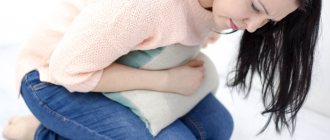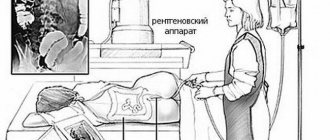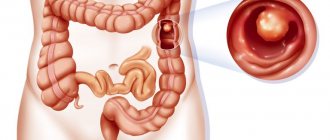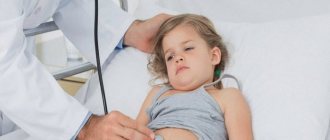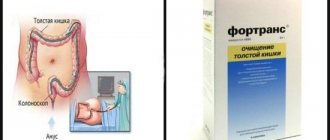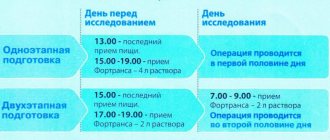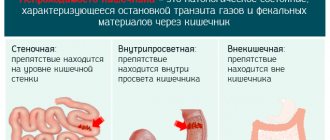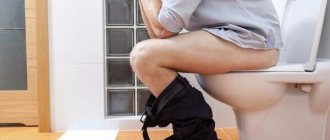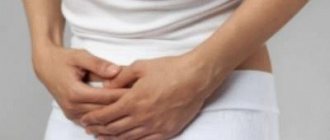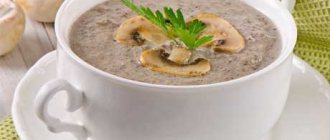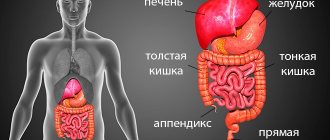Any intestinal pathology requires a radical revision of nutrition. Diverticulosis is often accompanied by stool disorders and discomfort in the abdomen, which intensify if the rules of nutrition are not followed. A diet for intestinal diverticulosis will help restore the intestinal mucosa and avoid serious complications. With such a diagnosis, it is advisable to adhere to dietary nutrition constantly and avoid breakdowns. With the help of a properly selected treatment regimen, you can quickly normalize the patient's condition.
Diet for intestinal diverticulosis: what is this disease and how can nutrition help?
Most often, this pathology occurs in people after 40-50 years of age due to degenerative processes in the intestines. Diverticula are small protrusions in the wall of an organ caused by thinning or other reasons. There may be one diverticulum or many. The danger of the disease is that it leads to:
- inflammatory process;
- intestinal bleeding;
- tumor neoplasms;
- the appearance of fistulas;
- dysbacteriosis.
Lack of treatment and poor nutrition can lead to the saddest ending - death. A diet for diverticulosis, together with drug treatment, helps normalize intestinal function. Rough, spicy food will lead to rupture of the thin wall of the diverticulum, entry of feces into the abdominal cavity, peritonitis, which is very life-threatening. However, experts say that with the right approach and timely consultation with a doctor, the disease can be cured and the risk of developing severe complications in the chronic form can be reduced.
It is important to remember that treatment in this case must be comprehensive. Medicines will not help if you eat junk food, and nutrition alone will not help quickly relieve pain and inflammation if it has spread.
Diagnostics
In most clinics, patients with complaints typical of diverticulitis undergo a survey X-ray of the peritoneal organs with contrast (the contrast agent is retained in the diverticula, they are visible on the image as additional round-shaped cavities). Ultrasound is also prescribed (helps determine the presence of diverticula, the presence of an inflammatory infiltrate or an abscess in the peritoneum).
Photo: Image Point Fr / Shutterstock.com
The most informative method for detecting diverticulitis is computed tomography. To examine abnormal formations, doctors use a special contrast agent. It is administered to the patient rectally and orally, and in some situations also intravenously. An alternative to CT may be magnetic resonance imaging.
After suppression of the acute inflammatory process, patients with diverticulitis of the sigmoid colon are advised to undergo colonoscopy. This is an informative diagnostic procedure during which the doctor examines intestinal tissue in detail. For this, a special probe equipped with a camera is used. The device transmits an image of the intestinal walls onto the screen. During a colonoscopy, the doctor may additionally remove tissue for further examination (to rule out malignancy).
Causes and signs of pathology
At first, the disease may resemble a common intestinal disorder. But with diverticulosis, the symptoms do not subside, but, on the contrary, increase. Signs of the disease include:
- chronic constipation;
- bloating, rumbling;
- pain in the navel area or below;
- nausea;
- the appearance of blood impurities in the stool.
If such symptoms occur, you should immediately consult a doctor, undergo an examination and begin treatment. The sooner measures are taken, the lower the risk of unpleasant consequences. Symptoms may vary depending on the course of the disease. For example, a patient may experience frequent belching and tenesmus (false urge to defecate).
Problems with blood vessels, weakening of the intestinal walls and stretching due to constipation can lead to the appearance of diverticula. Due to age-related changes in the body, the disease is difficult to avoid after the age of 50. The risk of diverticulosis increases due to poor nutrition, stress, excessively strict diets, intestinal infections, and hormonal imbalances. This disease must be treated as early as possible.
Treatment regimen
Diverticulitis of the sigmoid colon responds well to conservative therapy if it occurs without severe complications (perforation or peritonitis). Treatment may include:
- diet;
- taking tablets or injections of antibiotics (to suppress gram-negative bacilli and anaerobes present in the colon);
- the use of antispasmodics, for example, mebeverine (to relieve pain and restore intestinal motor function);
- taking antimicrobial and anti-inflammatory drugs (sulfasalazine, mesalazine);
- taking medications that stimulate gastrointestinal motility (prokinetics);
- use of laxatives (for persistent constipation);
- taking petroleum jelly (to prevent constipation, cleanse the intestines and speed up regeneration processes).
Photo: fizkes / Shutterstock.com
Even after successful recovery from an episode of acute diverticulitis, the risk of recurrence of the disease reaches 50%.
Features of diet and nutrition for intestinal diverticulosis
Most often, dietary nutrition for this disease includes a large amount of fiber, protein, a minimum of salt and hot spices. If the disease has already become chronic, it is necessary to adhere to a proper healthy diet throughout your life. Any diet violations will lead to exacerbations and relapses. To create a menu for a week during a diet for intestinal diverticulosis, you need to remember the following nuances:
- You need to eat 5-6 times a day, but keep the portions small.
- Warm food is best digested, not hot or cold.
- It is advisable to prepare purees and other dishes with a soft consistency. If food is hard, it must be chewed thoroughly. The basis of nutrition should be slimy porridges, soups not based on meat broth.
- All foods that cause increased gas formation should be excluded.
- Although dietary fiber and dietary fiber are good for the intestines, rough fiber can damage the intestinal walls.
- You need to eat more dairy products. They not only help normalize digestion, but also restore intestinal microflora thanks to lacto- and bifidobacteria. However, you need to choose only low-fat foods.
- For the normal functioning of all internal organs, you need to follow a drinking regime. Pure water without gas helps relieve inflammation, get rid of constipation and improve metabolism. You need to drink 6-8 glasses of clean water per day, not counting tea and juices.
- You will have to forget about alcohol, nicotine and strong coffee. They have a particularly negative effect on the functioning of the colon.
- It is important to remember about the rules of thermal processing of food. Frying is not recommended, as it leaves no vitamins and minerals in the food, and frying in oil is harmful to digestion. It is best to choose boiling, stewing, steaming.
The doctor will be able to draw up a nutrition and treatment plan after the examination. If there are other chronic diseases, they also need to be taken into account when creating a menu.
Healthy Diet Recipes
To achieve a real therapeutic effect in the treatment of intestinal diverticulosis, the diet includes foods that increase the efficiency of the digestive system and remove toxins and harmful substances from the body. Among the medicinal recipes it is worth noting:
- A mixture of apples and wheat. This herbal “tandem” helps prevent the development of inflammation in the intestines. To prepare, you will need 2-3 tablespoons of sprouted wheat grains and one green apple, which must be peeled and grated, then mixed with wheat ground in a blender. After thoroughly mixing the ingredients, the mixture is eaten in the morning before breakfast.
- Kissel made from oatmeal and kefir. To prepare a dish that helps cleanse diverticula, take 3 liters of boiled cool water and a glass of low-fat kefir or yogurt. Mix thoroughly. After this, add 500 g of flakes and leave overnight in the refrigerator. By morning, the mixture will become a thick concentrate, which must be used when cooking jelly (take 1.5-2 liters of water for 2 tablespoons of porridge).
- Mint tea. This plant is often used to treat diseases of the digestive system. It’s easy to prepare a fragrant, aromatic drink that has a calming effect: pour 5-10 g of herbs with boiling water and leave for 10-15 minutes.
Diet for diverticulosis: what is possible, what is not?
To prevent the development of inflammation, suppuration and rupture of diverticula, you need to carefully review your diet.
The diet for intestinal diverticulitis in adults allows the consumption of the following products:
- mashed potatoes;
- buckwheat and oatmeal with water or half-and-half milk;
- low-fat vegetable soups;
- yesterday's or dried wheat bread (not rye);
- a small amount of butter;
- fermented milk products with a small amount of fat;
- boiled eggs (1 piece per day);
- non-acidic fruits and vegetables after heat treatment or in puree form;
- lean and uncooked meat;
- fish.
You can prepare many delicious dishes from the above. You need to add salt to a minimum, exclude seasonings with the addition of flavor enhancers. You can season dishes with dill, parsley, dried mild herbs, and lemon juice. You cannot eat store-bought sauces, mayonnaise, or ketchup. If you follow the diet, unpleasant symptoms decrease already on the 2nd day.
You can eat fresh low-fat cottage cheese and add a little cream to it. Eggs should be eaten with caution. It is better to use them less often in the form of omelettes. You can't eat scrambled eggs. For snacks, biscuits or other low-sweet and savory cookies are allowed. Marmalade in small quantities and honey will also be useful if you are not allergic to it. Soaked dried fruits can be eaten daily. However, it is important to remember that prunes in large quantities provoke a rapid cleansing of the intestines. Therefore, 10 pieces per day will be enough.
The following should be excluded from the diet for diverticulosis:
- any fried foods;
- canned food;
- fast food;
- soda;
- alcoholic drinks;
- citrus and other sour fruits;
- spicy seasonings;
- sausages;
- cabbage;
- onion and garlic;
- strong coffee.
The diet should not contain foods containing small indigestible particles, such as seeds, strawberries, popcorn, kiwi. You also need to remove too coarse fiber: radishes, turnips.
At the first signs of improvement, you should not immediately quit the diet and return to your usual lifestyle. The presence of diverticula will always create conditions for the development of the inflammatory process, so it is better to forget prohibited foods forever.
Surgery
In some cases, the development of acute diverticulitis requires emergency surgical intervention. When an abscess forms, doctors sometimes perform percutaneous drainage under CT scan guidance. This is a minimally invasive and effective intervention, but it does not help if the patient has several abscesses or the abscesses are not accessible for the procedure.
Photo: Gorodenkoff / Shutterstock.com
The development of free perforation or diffuse peritonitis requires emergency surgery. Also, the help of a surgeon is needed if the patient has severe symptoms that cannot be controlled by conservative treatment within 3-5 days. It is also performed in case of regular relapses of the disease, which are dangerous with complications and even death.
Surgical treatment usually involves resection (removal) of the affected part of the intestine. If the pathological process is not accompanied by perforation, abscess formation and severe inflammation, doctors immediately perform an anastomosis: an artificial connection of separate ends of the intestine. If such an operation is not possible, a temporary colostomy (creation of an artificial opening for the evacuation of intestinal contents) is required. The anastomosis is then performed after the inflammatory process has subsided and the general condition has improved.
Open surgery for diverticulitis is a fairly serious procedure. After it, the patient needs a certain recovery period under the supervision of a doctor.
Diet for colon diverticulosis: sample menu
Healthy nutrition should become constant with this diagnosis. You should try to prepare dishes only from approved products. You can diversify the menu, create unusual recipes from meat, vegetables, low-fat cottage cheese. At first the menu should look like this:
- porridge or fruit salad for breakfast;
- You can have a snack with yogurt without additives or flavors;
- for lunch, vegetable soup and a slice of bread, cheesecakes made from light cottage cheese in the oven;
- afternoon snack – a glass of kefir;
- dinner - a piece of fish baked in foil with stewed vegetables.
Despite the fact that fermented milk products are allowed, you should not drink regular milk. It is difficult to digest and can cause flatulence and stool upset. You can cook porridge with milk, but choose only low-fat ones. You should not overeat at night, as this is an additional burden for the intestines. If you feel very hungry and interfere with sleep, you can drink a glass of kefir, eat a sweet fruit, or a baked apple.
For breakfast you can also eat toast with a piece of cheese or butter, cottage cheese casserole, and fruit. It is better to drink tea an hour after meals so as not to dilute gastric juice. It is also useful to drink a glass of warm water before breakfast, half an hour before meals, to start the digestive tract.
For lunch and dinner, it is acceptable to eat meat, such as chicken breast or lean beef. The meat is boiled, stewed, baked. Buckwheat, rice, and vegetables are suitable as a side dish. The meat needs to be washed well, processed, peeled, cartilage and veins removed.
When preparing soups, you cannot use bone broths, but you can add small pieces of boiled meat. Puree soups are especially useful. Dinner should be light but filling. An excellent option would be fish, vegetable stew, baked potatoes.
The diet for diverticulosis of the large intestine should exclude all foods that irritate the mucous membrane. If nausea or blood in the stool occurs during treatment, you should immediately consult a doctor. In some cases, surgery is required.
You need to follow a strict diet for 2 weeks, then you can add pasta to your diet, a small amount of sweets (cookies, marshmallows), but avoid fatty, fried and spicy foods.
Diet for diverticulitis: what to do during an exacerbation?
The diet for intestinal cyverticulosis during its exacerbation should be especially strict. Many experts recommend complete fasting and drinking plenty of fluids. During the acute period, symptoms are especially severe. The patient experiences abdominal pain, nausea, and bowel movements. The main task of nutrition at this time is to relieve inflammation, normalize organ function and restore digestion.
If the symptoms are severe, you can fast for the first day and drink more clean water. Fasting will give the organ rest and relieve it. Fasting can last up to 3 days depending on the severity of the condition. During these 3 days, you can drink rosehip decoction to make up for the lack of vitamins. Then you can switch to dietary products. You are allowed to eat any foods from the permitted list above, but do not forget to drink enough water.
Such nutrition will reduce the load on the digestive organs, speed up metabolism, improve gastric motility, and reduce the likelihood of constipation.
You should not overeat, especially if the pathology is accompanied by flatulence. After eating, you need to feel full, but not heavy in the stomach. For severe constipation, you need to add vegetable oil to your diet. Flaxseed and olive oil are especially useful. It can be taken on an empty stomach or added to vegetable salads. You cannot fry in vegetable oil; such food will do more harm than good. It is recommended to add prunes and pumpkin to the diet, exclude baked goods, and reduce the consumption of sweets.
It is useful to drink mineral water, but first you need to release the gas from it. You can also drink homemade dried fruit compotes with a little sugar.
Often, for intestinal diseases and increased gas formation, it is recommended to drink tea with mint. However, you should consult your doctor before using this product. Inflamed mucous membranes can react unpredictably to herbs.
Nutritionist's recommendations
Even with persistent remission of the disease, the patient needs to adhere to a strict diet:
- eat in small portions;
- eat food often - every couple of hours;
- have dinner a couple of hours before going to bed;
- eat slowly, chewing food thoroughly.
To prevent the accumulation of food debris in the diverticula of the sigmoid colon, doctors advise taking a comfortable position after eating. This will make the bags easier to empty. Soon after eating, you should tilt your head to the sides several times, make a series of swallowing movements, and take a couple of sips of mineral water.
